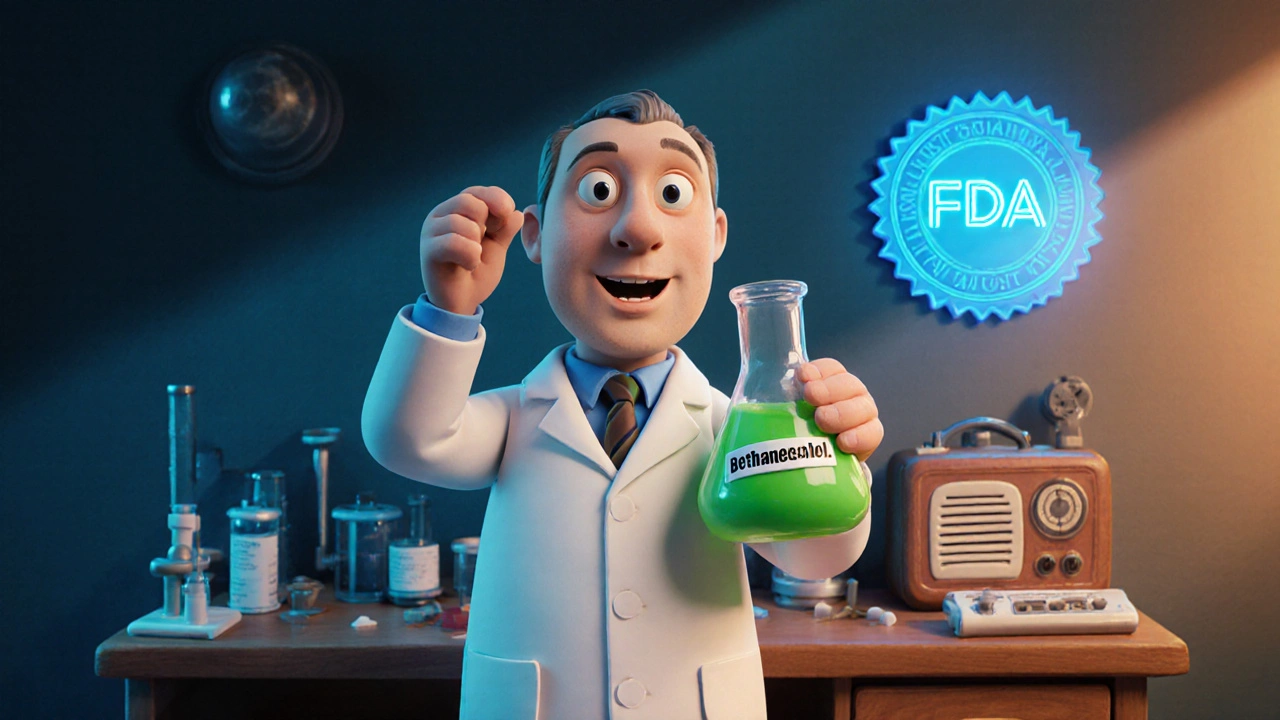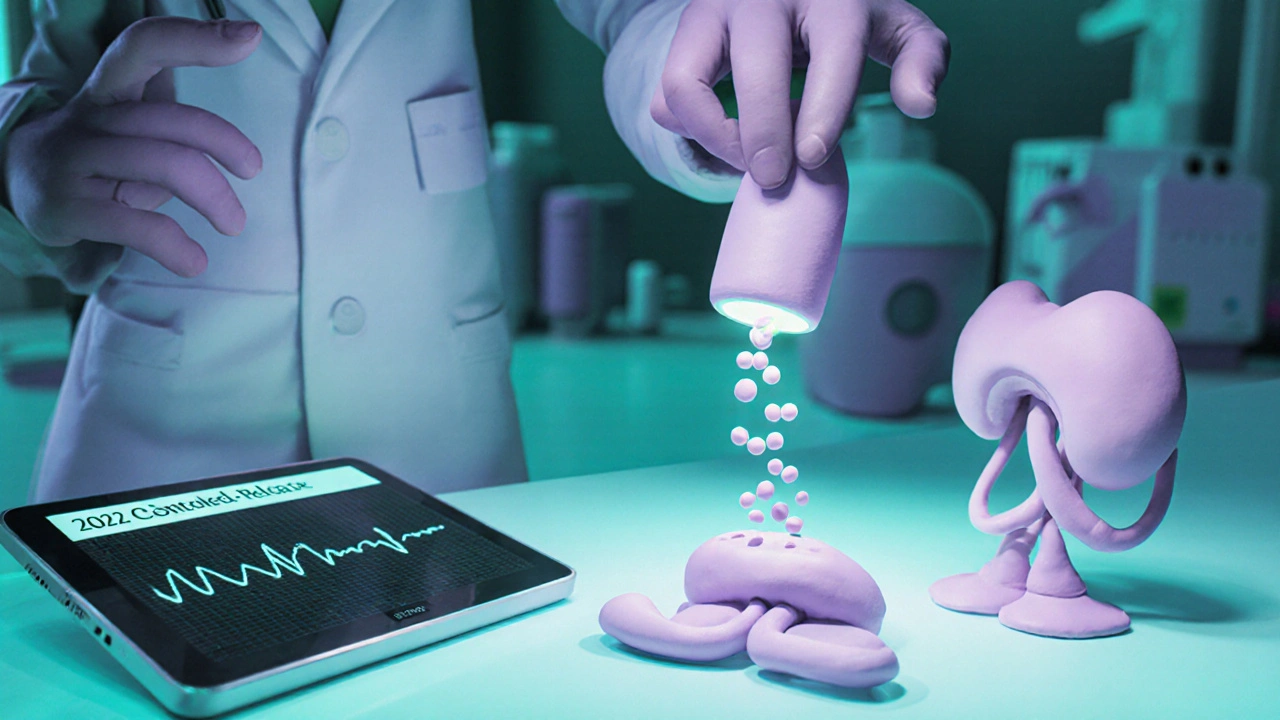Bethanechol Safety Checker
Is Bethanechol Safe for You?
This tool helps you check potential safety concerns based on the article's clinical guidelines. Always consult your healthcare provider for medical advice.
Results will appear here after checking your conditions.
Ever wondered how a tiny molecule became the go‑to drug for bladder and gut problems? The story of Bethanechol history reads like a classic science‑driven saga: from accidental lab synthesis, through regulatory hurdles, to everyday bedside use. Below is a spoken‑style walk‑through that shows each milestone on a clear timeline.
Early Roots: From Acetylcholine to Synthetic Analogs
In the 1920s researchers identified Acetylcholine as the first neurotransmitter, a chemical that tells muscles to contract. By the 1940s chemists realized the molecule was too fragile for drug use - it broke down quickly in the body. The goal became clear: design a stable compound that could imitate acetylcholine’s effect on cholinergic receptors without being wiped out.
1950s - Discovery and Naming
At a British pharmaceutical lab, chemist Richard J. G. Montgomery synthesized a new quaternary ammonium compound. The molecule, later called Bethanechol, was designed to resist breakdown by cholinesterase enzymes, keeping it active longer in the gut and bladder.
1960 - FDA Approval and First Indications
The U.S. Food and Drug Administration reviewed the data and, in 1960, granted approval for Bethanechol to treat postoperative ileus - a painful slowdown of the intestines after surgery. The label highlighted “stimulates smooth muscle contraction” as the core benefit.
1970s - Expanding Clinical Use
Clinical trials in the early ‘70s showed that Bethanechol also helped patients with urinary retention caused by neurogenic bladder or postoperative swelling. By 1974, physicians began prescribing it off‑label for chronic constipation when other laxatives failed. The drug’s safety profile - a few mild side effects like sweating - made it appealing for long‑term use.
1980s - International Adoption and Generic Competition
European regulators followed the U.S. lead, adding Bethanechol to their formularies. Companies in Germany and Japan launched generic versions, driving the price down and widening access. The period also saw the first head‑to‑head trials comparing Bethanechol with other cholinergic agonists such as carbachol and pilocarpine.
1990s - Patent Expiry and Market Stabilization
Patents expired worldwide, allowing many manufacturers to produce the drug. Market reports from 1995 show that Bethanechol accounted for roughly 3 % of all gastrointestinal motility agents sold in the U.S., a modest but steady share.

2000s - Safety Re‑evaluations and Guideline Updates
Large database analyses in the early 2000s flagged rare cardiac arrhythmias when Bethanechol was given in high doses to elderly patients with underlying heart disease. Professional societies responded by issuing dosage‑adjustment guidelines, recommending start‑low‑go‑slow titration for patients over 65.
2010s - Modern Clinical Practice
Guidelines from the American Urological Association (AUA) and the American College of Gastroenterology (ACG) now list Bethanechol as a second‑line therapy for non‑obstructive urinary retention and postoperative ileus. The drug is often chosen for its predictable onset (about 30 minutes) and limited systemic side effects compared with older agents.
2020s - Ongoing Research and Future Directions
Recent Phase II studies explore Bethanechol’s potential in treating neurogenic bladder in spinal cord injury patients. Early data suggest that controlled‑release formulations could improve adherence and reduce dosing frequency. Meanwhile, pharmacogenomic work is investigating why some patients respond dramatically while others see little effect.
Mechanism of Action: How Bethanechol Works
Bethanechol is a selective muscarinic cholinergic agonist. It binds to M3 receptors on smooth muscle cells in the bladder and gastrointestinal tract, mimicking acetylcholine’s signal without being broken down quickly by acetylcholinesterase. The result is a gentle, sustained contraction that helps move stool or urine forward.
Clinical Uses at a Glance
- Postoperative ileus - helps the intestine resume peristalsis after abdominal surgery.
- Neurogenic urinary retention - improves bladder emptying in patients with spinal cord injury or multiple sclerosis.
- Chronic constipation - used when other laxatives fail to stimulate bowel movements.
- Diagnostic testing - sometimes administered during urodynamic studies to assess bladder contractility.

How Bethanechol Stacks Up Against Similar Drugs
| Drug | Primary Receptor | Typical Indication | Onset (minutes) | Key Side Effects |
|---|---|---|---|---|
| Bethanechol | M3 (muscarinic) | Urinary retention, postoperative ileus | 30‑45 | Sweating, mild hypotension |
| Carbachol | M2 & M3 | Glaucoma, ocular surgery | 5‑10 | Bradycardia, bronchospasm |
| Pilocarpine | All muscarinic subtypes | Dry mouth, Sjögren’s syndrome | 15‑20 | Excessive salivation, nausea |
Safety Profile and Common Pitfalls
Most patients tolerate Bethanechol well, but clinicians should watch for:
- Excessive sweating or flushing - sign of overstimulation.
- Hypotension - especially if combined with other vasodilators.
- Bradycardia - rare, but noteworthy in patients on beta‑blockers.
- Contraindications - avoid in patients with severe asthma, peptic ulcer disease, or recent myocardial infarction.
When a dose is missed, the recommendation is to skip it rather than double‑up, as accumulated drug can cause severe cramps or urinary retention.
Regulatory and Market Milestones
Key dates that shaped Bethanechol’s commercial life:
- 1960 - First FDA approval for postoperative ileus.
- 1973 - FDA expands label to include urinary retention.
- 1985 - Generic entry in Europe reduces price by 40 %.
- 1999 - Patent expiry opens market to 12 generic manufacturers.
- 2008 - FDA issues safety communication about high‑dose use in the elderly.
- 2022 - First controlled‑release formulation receives regulatory clearance in the U.S.
Future Outlook: What’s Next for Bethanechol?
Researchers are looking at two promising avenues:
- Targeted drug delivery - nanoparticle carriers could direct Bethanechol to the bladder wall, minimizing systemic exposure.
- Combination therapy - pairing Bethanechol with low‑dose opioids may improve postoperative pain control while keeping gut motility intact.
If these trials succeed, the drug could see a resurgence in surgical protocols and neuro‑rehab programs.
Frequently Asked Questions
What is Bethanechol used for?
Bethanechol is prescribed mainly for postoperative ileus and non‑obstructive urinary retention. It can also help severe constipation when other agents fail.
How does Bethanechol differ from Carbachol?
Bethanechol selectively stimulates muscarinic M3 receptors and has a slower onset, making it safer for systemic use. Carbachol works faster and affects both muscarinic and nicotinic receptors, which limits its use to ocular or topical applications.
Can I take Bethanechol if I have asthma?
Asthma patients should avoid Bethanechol unless a physician deems the benefit outweighs the risk, because cholinergic stimulation can trigger bronchoconstriction.
What are common side effects?
The most frequently reported effects are sweating, flushing, mild hypotension, and occasional nausea. Severe cramps or urinary retention are rare and usually linked to overdose.
Is there a newer formulation of Bethanechol?
Yes, a controlled‑release tablet was approved in 2022, providing steadier plasma levels and allowing twice‑daily dosing instead of three times a day.


Drew Waggoner
October 18, 2025 AT 16:39Bethanechol's history reads like a cautionary tale of over‑optimism.
Mike Hamilton
October 18, 2025 AT 20:49I think the timeline gives a good overview of the drug's evolution.
It shows how a simple molecule became a clinical tool.
Some parts feel a bit rushed, like the safety re‑evaluations section that could use more depth.
Also there are occasional typo like "re‑evaluation" being missspelled.
Overall, it is a clear and simple walk‑through.
Matthew Miller
October 19, 2025 AT 00:59Wow, the journey of Bethanechol is like a roller‑coaster ride through pharma history!
From the 1920s discovery of acetylcholine to the 2020s cutting‑edge trials, each decade adds a fresh splash of color.
The 1960 FDA approval was a bold leap that set the stage for countless patients to regain normal bladder function.
Then the 1970s expansion into urinary retention shows how clinicians adapt drugs for new challenges.
Fast‑forward to the 2000s safety re‑evaluations – those big‑data studies really changed prescribing habits.
Nowadays, the controlled‑release formulation feels like a futuristic upgrade.
All in all, Bethanechol's story is a vivid reminder that medicine evolves step by step, never standing still.
Liberty Moneybomb
October 19, 2025 AT 05:09Let's pull back the curtain and look at the hidden forces shaping Bethanechol's rise.
The 1960 FDA green light wasn't just about data; it was a product of Cold War era pharma lobbying.
Behind those approvals, secret committees were pushing compounds that could keep the population productive after surgery.
Fast forward to the 1980s, generic competition was marketed as a triumph of free markets, yet it coincided with massive corporate mergers that quietly dictated pricing.
In the 1990s, the apparent market stabilization masked a surge in off‑label uses, driven by insurance reimbursements that favored low‑cost oral agents.
Early 2000s safety alerts about cardiac arrhythmias were buried in lengthy FDA letters, hardly noticed by busy clinicians.
Guideline updates in the 2010s, while praising evidence‑based practice, conveniently ignored emerging data on drug interactions with newer anticholinergic meds.
The 2020s push for nanoparticle delivery sounds futuristic, but it's also a perfect avenue for big pharma to secure patents and extend exclusivity.
Every milestone listed in the timeline carries an undercurrent of economic and political pressure.
Even the controlled‑release tablet approved in 2022 is marketed as patient‑friendly, yet its price point remains double that of the original generic.
Researchers claim the neurogenic bladder trials are purely scientific, but they also open doors for lucrative post‑market extensions.
One can't help but wonder how many of these advances truly stem from patient need versus profit motive.
Nevertheless, the pharmacology is solid – it works as intended.
Patients still benefit from a drug that stimulates smooth muscle without major systemic fallout.
But we must stay vigilant, recognizing that behind every therapeutic triumph lies a complex web of hidden agendas.
Albert Fernàndez Chacón
October 19, 2025 AT 09:19The mechanism of Bethanechol is straightforward – it’s an M3 muscarinic agonist.
Clinically, that translates to smooth muscle contraction in the bladder and gut.
From a pharmacokinetic perspective, the quaternary ammonium structure prevents rapid metabolism, giving it a longer half‑life.
That’s why the onset is around 30‑45 minutes, unlike carbachol which acts within minutes.
Overall, its safety profile is decent, with sweating and mild hypotension being the most common adverse effects.
Stephanie Zaragoza
October 19, 2025 AT 13:29From a regulatory standpoint, Bethanechol’s journey is a textbook case of incremental approval; first, the FDA accepted the data for postoperative ileus, then, years later, expanded the label to include urinary retention; each step was accompanied by rigorously reviewed clinical trial results; the safety communication in 2008 highlighted the need for dose adjustment in the elderly, underscoring the importance of post‑marketing surveillance; finally, the 2022 controlled‑release approval reflects ongoing innovation within an established therapeutic class.
Janet Morales
October 19, 2025 AT 17:39People love to praise Bethanechol without acknowledging the downsides.
Sure, it helps with bladder emptying, but the sweating and flushing can be intolerable for some patients.
And let’s not forget the rare but serious risk of severe cramps if the dose is mis‑managed.
Critics who ignore these issues are simply buying into the pharma narrative.
We need a balanced view that weighs benefits against real‑world side effects.
Rajesh Singh
October 19, 2025 AT 21:49It’s morally questionable that a drug developed for a specific postoperative issue is now being stretched across off‑label uses.
Physicians should prioritize evidence‑based indications rather than chasing insurance reimbursements.
The push for neurogenic bladder trials feels more like a profit‑driven expansion than a patient‑centered need.
Ethics demand transparency about where the data truly supports efficacy.
Alex Lineses
October 20, 2025 AT 01:59Great summary of the pharmacology, Albert.
To add, when discussing the onset time, it’s helpful to compare with the half‑life: Bethanechol’s 30‑45 minute onset aligns with its roughly 2‑hour elimination half‑life, which supports the twice‑daily dosing of the controlled‑release formulation.
Brian Van Horne
October 20, 2025 AT 06:09Mike, those occasional typos actually hint at how fast the field evolves-details can slip when data piles up.
Nevertheless, the timeline correctly emphasizes the 2008 safety alert, a pivotal moment for geriatric dosing guidelines.
Norman Adams
October 20, 2025 AT 10:19Liberty’s dramatics are noted, but let’s be realistic: the alleged conspiracies rarely affect the core clinical data.
The drug’s efficacy remains supported by multiple randomized trials, independent of any shadowy agendas.
Margaret pope
October 20, 2025 AT 14:29Stephanie your thorough regulatory walk‑through is spot on and really helps frame the history of approvals